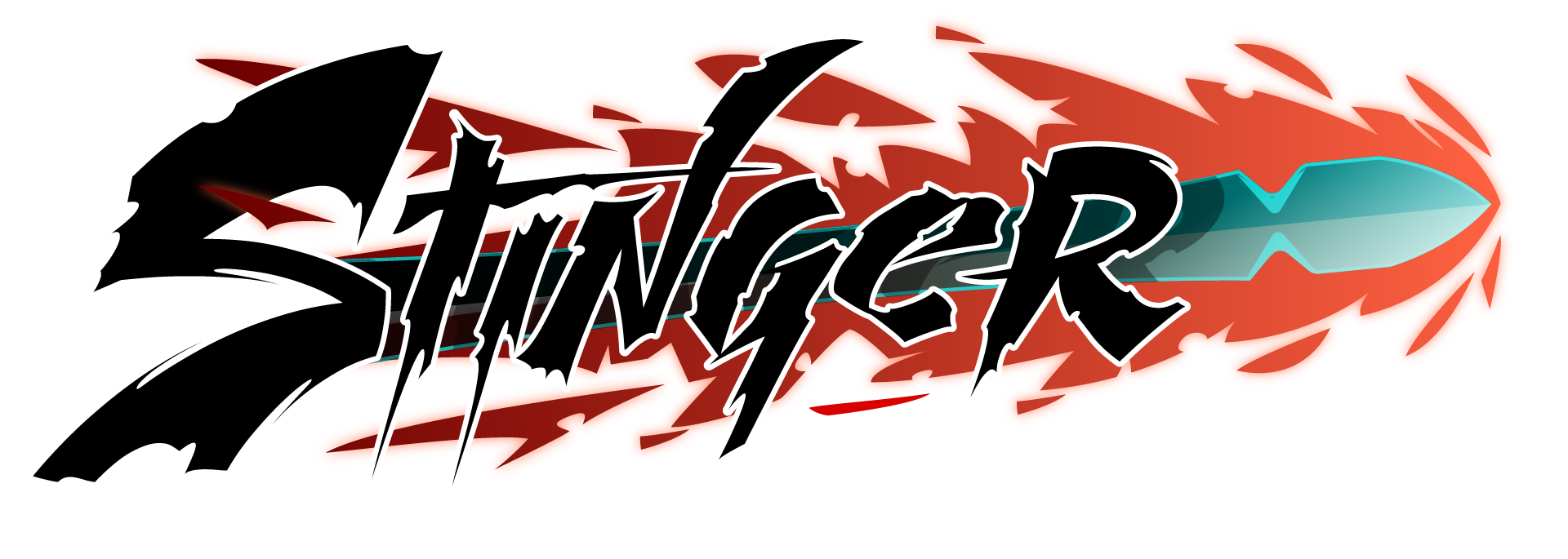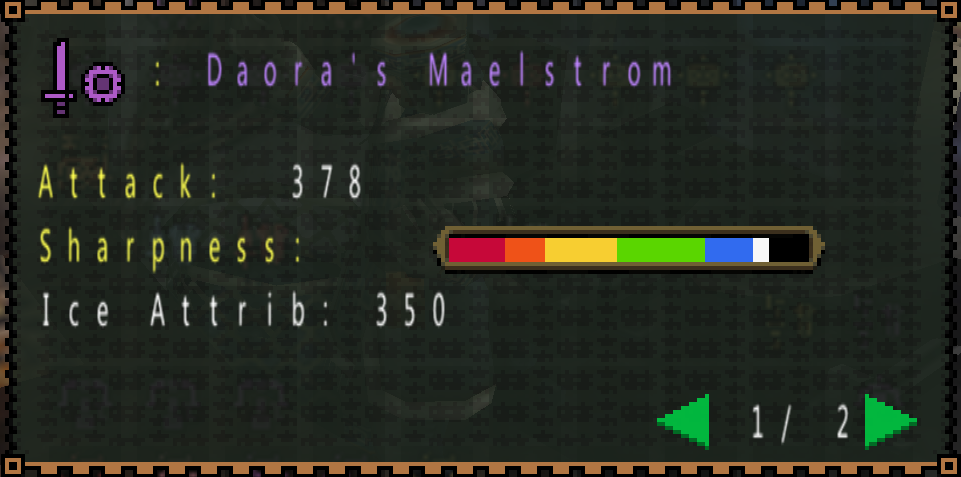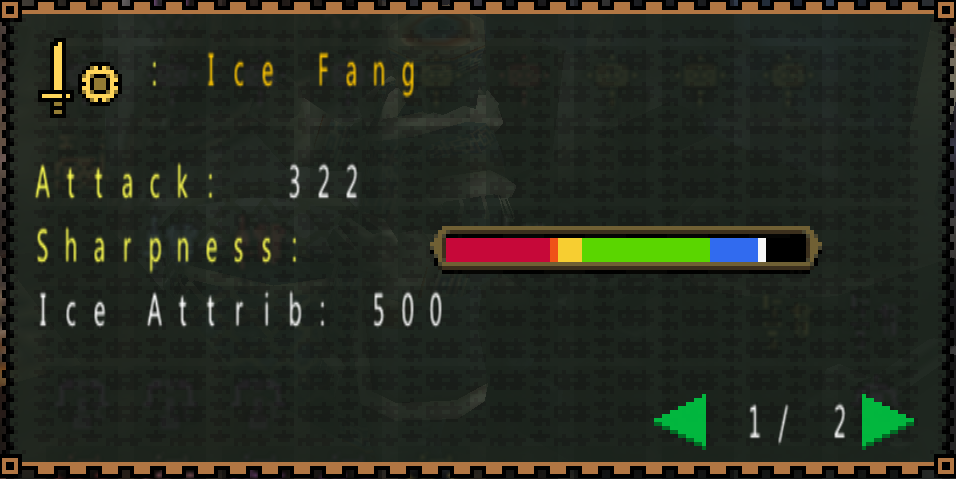The name of a game is something we tend to take for granted. It’s a symbol, it brings back memories of the past and wishes of the future. Rarely though, is it descriptive. Call of Duty isn’t about being a contributing member of society, it’s about shooting. Devils never cry in Devil May Cry and there is no title called “Grab Enemies III: Smash them to Bits”, only God of War III.
There is one modern exception though. Monster Hunter; a game where you hunt monsters. Its name is the best description you can give of the series.
Its entire focus is creating an action game based on the hunting experience: starting from the village you make your home, you undergo quests to go gathering or hunting. You study and prepare for the target you set your eyes on, decide what items and equipment to bring and begin the hunt.
Your targets all have different weaknesses, characteristics, ecology and habitats. If you manage to kill them you bring materials back to your village, used together with what else you gathered to create equipment and items to help you out in the next hunt.
At its core, that’s Monster Hunter. You gather, prepare, hunt and go home; rinse and repeat.
To go a bit more in detail, there are 2 hubs in each game: the Village and the Gathering Hall. In the Village you have a house where you change equipment and eat food for buffs, a farm where you can get some crafting materials, shops and the Quest Counter.
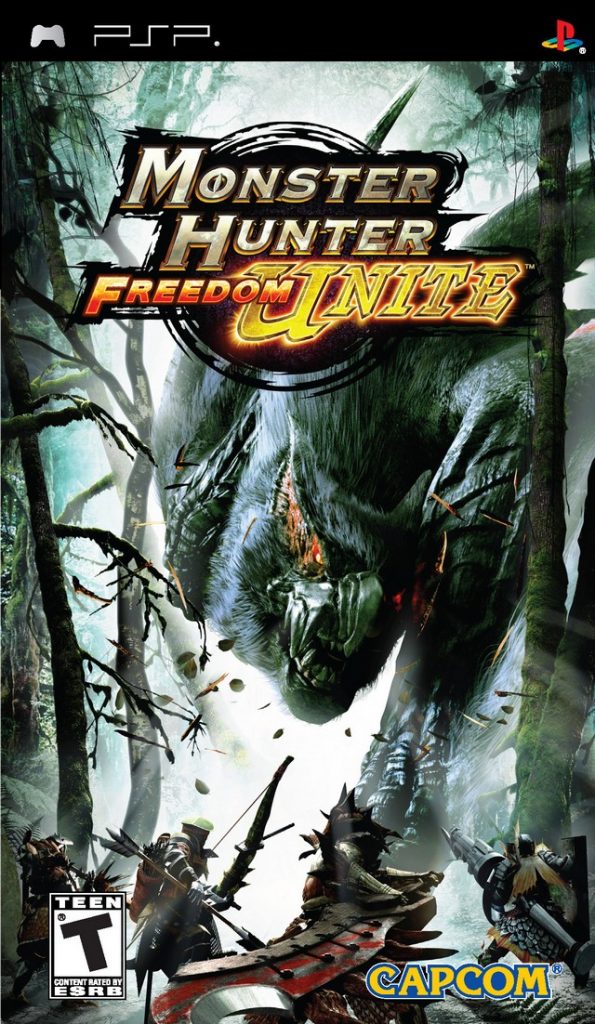
There’s the Village Quests, which are easier and work as a gradual introduction to the game, and then there’s the Gathering Hall.
Here you can access quests that are scaled for multiplayer yet can still be done solo, even quickly if you are skilled enough. Being sorted in tiers (Low, High and G), each bringing new quests, new and more difficult monsters and rarer rewards.
Before you select any of these hunts however, you’ll end up asking yourself questions. Do I have enough Potions? Should I bring some Herbs and Blue Mushrooms to create more Potions if push comes to shove? Do I need to bring hot drinks against the cold of the tundra or a cool drink against the heat of the desert? Does my target tend to fly a lot? Do I have enough space in my inventory to bring flash bombs to lock him down?
These are some of the questions you need to answer if you want to hunt efficiently, and to be able to ask these questions you need to be experienced enough. Experiment and study the environment and the monsters and prepare.. That… is Monster Hunter.
And it’s this exact focus on preparation…this feeling of hunting monsters – more than just killing bosses, that created a niche yet passionate community.
From the moment the series arrived on the Playstation Portable (PSP) it became incredibly famous in Japan. Monster Hunter 1 and Monster Hunter G on the Playstation 2 sold between 220.000 and 315.000 units each, the series first release on the PSP in the form of Monster Hunter Freedom sold 1.300.000 units – a staggering increase.
The portability of the console made it easily playable locally with your friends, even while commuting on the train. Pair this with the RPG and co-op aspects and Capcom had another success on their hands..
Not so in the West however. People weren’t used to bringing their consoles with them and going online was impossible without using a Playstation 3 with third party software that was really difficult to set up. Playing solo, without the readily available information from Japanese magazines like Famitsu, meant facing a steep learning curve, one that few dared climb.
The few that did though, created a community and started to catalogue all of this information through trial and error by translating Japanese articles and pure dedication .Spawning forums like the now sadly defunct Italian MH4Fun and the international Minegarde; both instrumental in teaching and welcoming new players in the world of Monster Hunter.
And just as those sites were becoming full of life with a growing community, Capcom launched Monster Hunter Freedom Unite in 2008 on the PSP; the game that refined the formula and welcomed today’s veterans. And that’s the game we’re going to talk about in this article.
Chapter 01
The Role of Nature
The first thing you notice after the first cutscene ends is Pokke village.
It’s a small reserved place, with relaxing music and a simple pastoral mood. The mission areas are no different, all having their own special atmosphere:
The Mountain peaks have this calming, mysterious aura to them. Explore them deeper and you’ll find quiet caverns, a vista of the aurora and, upon reaching a peak, the discarded skin of a legendary dragon.
Meanwhile the Swamp has its eerie mist, a pale cavern and downright unsettling atmosphere making it still one of the fan favourite areas of the game while the Ancient Tower really exemplifies the idea of nature versus man.
The tower’s slow ascent through mystic ruins now only inhabited by lone thunderbugs, harbingers of doom and Elder Dragons who maybe once lived here together with men. This makes it one of the most interesting and mysterious areas.
Freedom Unit’s Maps are not only pretty to look at however, they all serve a different purpose.
Some of these maps have particular weather that require the use of a Cool Drink against the heat or a Hot Drink against the cold. Some, such as the jungle, also have a night and day version that changes the layout and weather; enabling or disabling the use of specific items. The time of day is set in stone once you choose the quest and doesn’t change dynamically however. The maps by definition feed back into the preparation aspect mentioned earlier.
All of the maps have a series of zones divided by loading screens. There’s always a base camp and then a different number of zones where you can find different gathering spots, fishing locations and of course different breeds of monsters, small and large.
Being on the PSP, the game uses clearcut textures. Outside of the jungle setting, this makes the map very clear to take in without details obstructing your vision while the monsters really pop out, making it easy to distinguish their movements.
Being generally flat in geometry, they also function more as an arena, allowing you to focus on fighting the monster without worrying about ledges that force you into a jump animation or differences in terrain height making a monster’s model behave in unpredictable manners. Different zones may still be larger or narrower making it so you need to change your approach in certain fights.
As you progress through the game the way you interact with these maps changes. In Low Rank you always start at the base camp and you’ll be given items designed to help you with the quest or to give you hints of specific monster weaknesses. Once you reach the higher ranks you will instead spawn at a random location without a map to guide you, making you apply everything you learned in the earlier quests to survive.
Chapter 02
Weapons, Armors and Hunting Tools
In your hunts you’ll eventually come face to face with your mark, and to take him down you can use a plethora of tools. First up are the weapons. Monster Hunter Freedom Unite features 11 different weapon classes.
Some are slow high damage dealing weapons like the Great Sword, focusing on hit and run tactics where you predict the monster’s movement to deliver powerful charged attacks.
There’s also the Hammer, with its strong 3-hit-combo, different types of charged attacks and the ability to K.O. monsters by hitting them on the head if your aim is true. It’s an ability that’s shared by the Hunting Horn, which sacrifices some of the hammer power to be able to play songs that buff players.
Other weapon classes are faster and able to deliver a lot more hits with a shorter reach, like the versatile Sword and Shield. The shield can block some attacks and this class allows you to use items without having to first sheath the weapon. Meanwhile the Dual Blades are a faster and more aggressive weapon, being able to enter a special Demon Mode to increase their attack-speed even more, at a cost.
Then there’s the Long Sword, a katana with great reach that excels at precise hits and is built around managing a special meter that increases with successive attacks which can be spent to use a strong special combo
For a more defensive option there’s the Lance; precise and with the strongest shield in the game. There’s also the Gunlance, using bullets and explosions to supplement its thrust.
There are also fully ranged options like the Heavy Bowgun and the Light Bowgun, the former sacrificing mobility for increased damage and the latter being able to shoot in rapid fire, dealing great amounts of elemental damage.
And finally there’s the Bow, which works as a bridge between melee and ranged, attacking with charging arrows that need to be shot at close range to be effective.
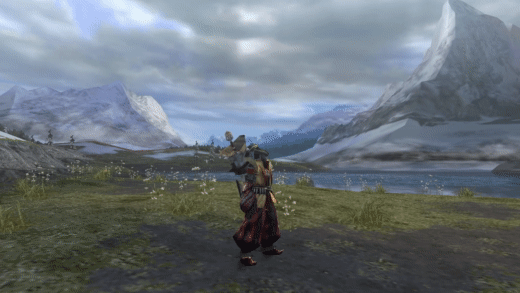
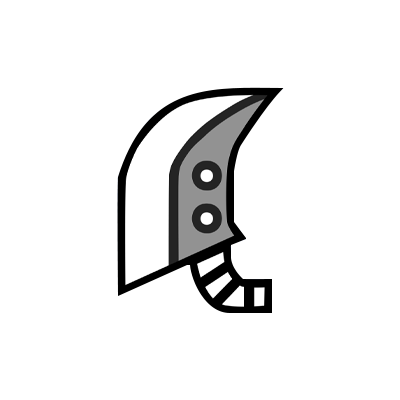 Great Sword
Great Sword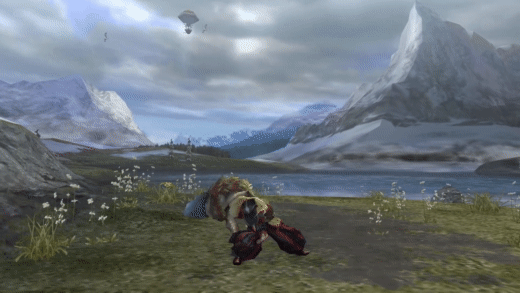
 Hammer
Hammer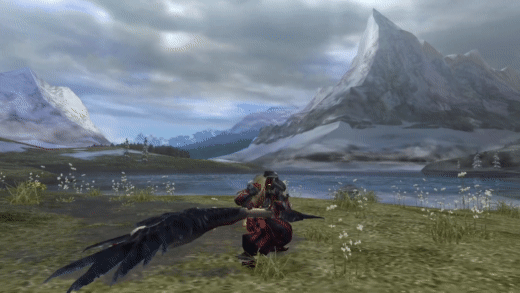
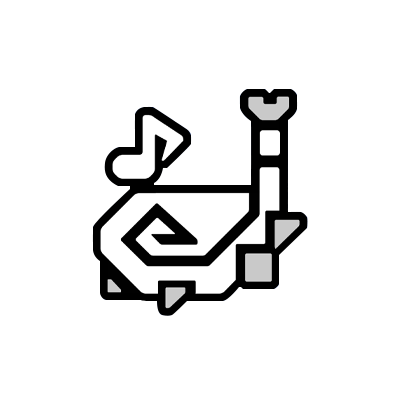 Hunting Horn
Hunting Horn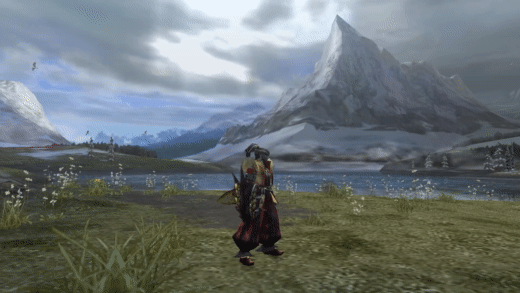
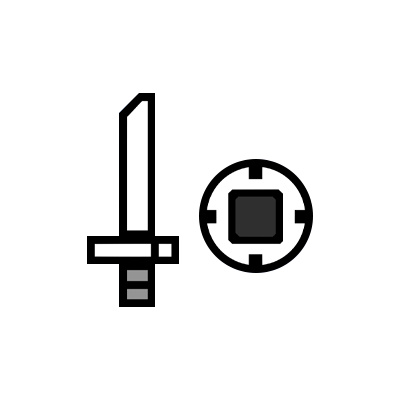 Sword and Shield
Sword and Shield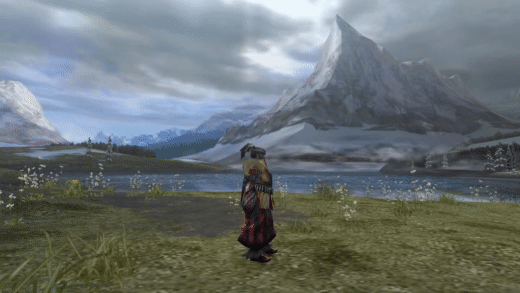
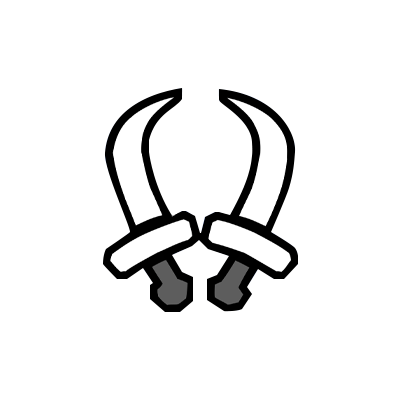 Dual Blades
Dual Blades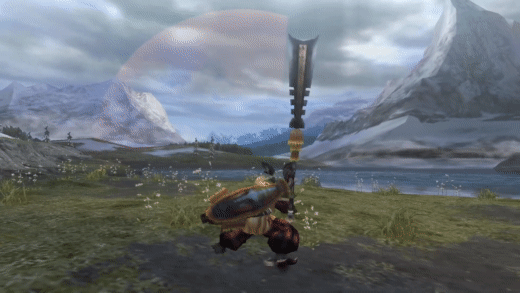
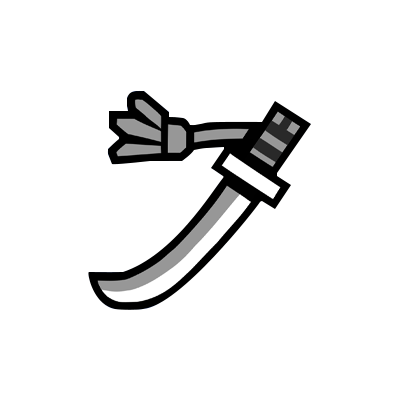 Long Sword
Long Sword
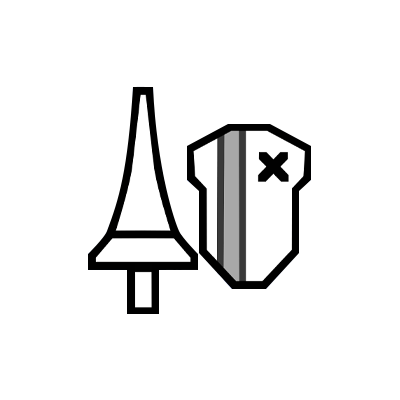 Lance
Lance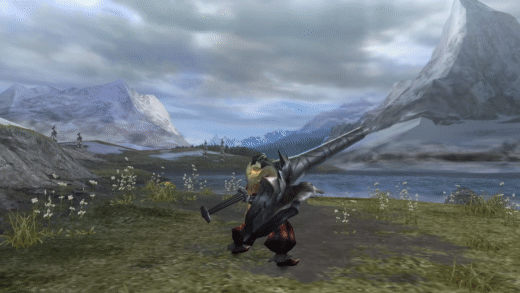
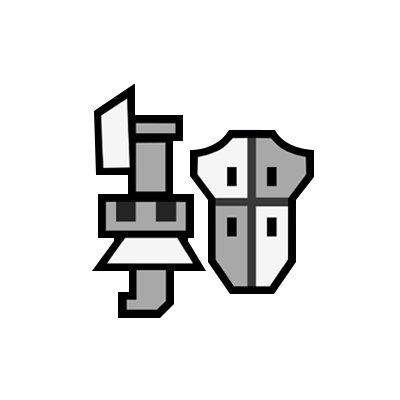 Gunlance
Gunlance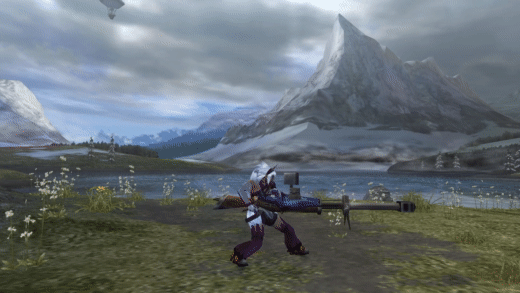
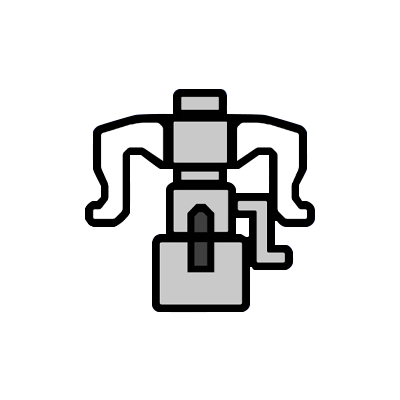 Heavy Bowgun
Heavy Bowgun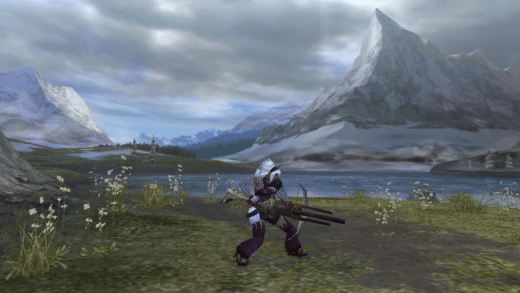
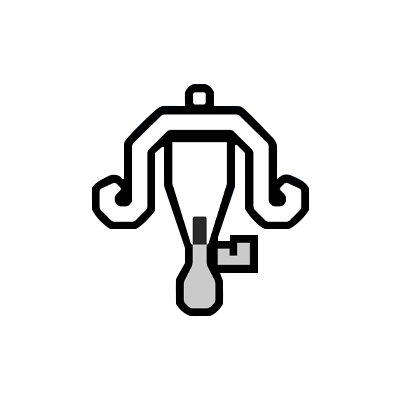 Light Bowgun
Light Bowgun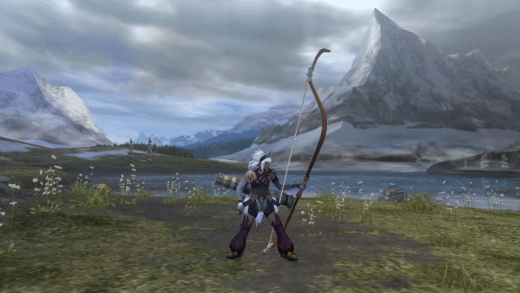
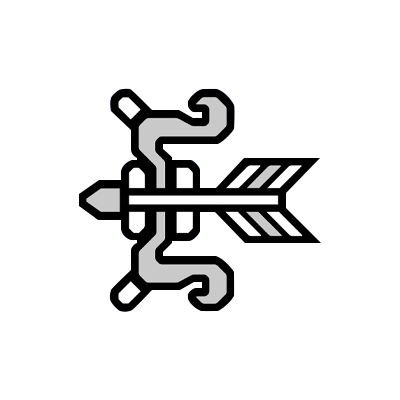 Bow
Bow
While their designs are very over the top, mechanically they aren’t, with each only having short combos based on three buttons. The complexity of Monster Hunter instead comes from how they play with the targets they are used on: The monsters.
All of your weapons have a fair bit of ending lag to every action; the Great Sword is the best example of this. It can deliver extremely damaging attacks, but they require you to stand still and charge it up. To make it even more dangerous, you cannot cancel out of this animation once it starts.
Knowing when to commit to the charge, what opening the monster gives and anticipating what the monster will do and how it will move are key aspects of the combat system. The same thing applies to faster weapons which, despite their quicker animation recovery, still don’t let you cancel out of attacks. This forces you to commit.
This commitment aspect also feeds into how damage is calculated, with every attack having a hidden “motion value” attached to it. The longer the attack takes to execute, the higher this value will be and the more damage it would do.
Mechanics that, together, force you to be precise and commit to your actions.
Other than this hidden motion-value, weapons all have four statistics attached to them. These are: Attack, Affinity, Slots and Sharpness. Some weapons also have status and elements, more on that later.
The Attack Value is self explanatory, the higher it is the more physical (Raw) damage you will do. Affinity simply shows you the percent chance of inflicting a critical hit for bonus damage or to inflict a weaker hit if the value is negative. Slots let you insert decorations that give you points towards specific other stats.
Sharpness is indicated by different colors, ranging from red to purple. The higher this value is the higher the multiplier every attack will receive. This value degrades with every attack and soon you will ‘de-class’ to a weaker color. You start to do less damage and your strikes might start to bounce off the harder parts of monsters; forcing you into a recovery animation.
To avoid this during the hunt, you can use a Whetstone to keep your weapon sharp. Using this item locks you in an animation however, so once again knowing when to use it best is of the greatest importance, or you risk being hit.
The ranged weapons don’t have sharpness. Instead they utilize different types of bullets, from piercing effects to element and status applications.
Ammo and Whetstones take up precious space in your limited inventory. Together with other items like potions, this makes it so you can’t just bring everything everytime you go on a hunt. You need to make choices of what you’re bringing, keeping in mind that you also need empty slots if you want to gather materials both from the map and from the monster.
Finally we have status and elements. Status is applied by hitting the enemy enough, with some weapons applying it faster per hit than others. The different types of ailments are:
 Poison, which applies a damage over time effects;
Poison, which applies a damage over time effects; Paralysis, which makes the monsters unable to move for a short time, and
Paralysis, which makes the monsters unable to move for a short time, and
 Sleep, which is self explanatory. Yet, in a twist, attacks that wake the monsters will do triple damage.
Sleep, which is self explanatory. Yet, in a twist, attacks that wake the monsters will do triple damage.
These status effects are great when playing solo and even more so when playing online, as having a monster freeze in its tracks suddenly allows four hunters to rake up the damage.
On the flipside, Elemental damage indicates how much damage of that element type you will do with every attack. Like status-effects, there are multiple types, them being  Fire,
Fire,  Water,
Water,  Ice,
Ice,  Thunder and
Thunder and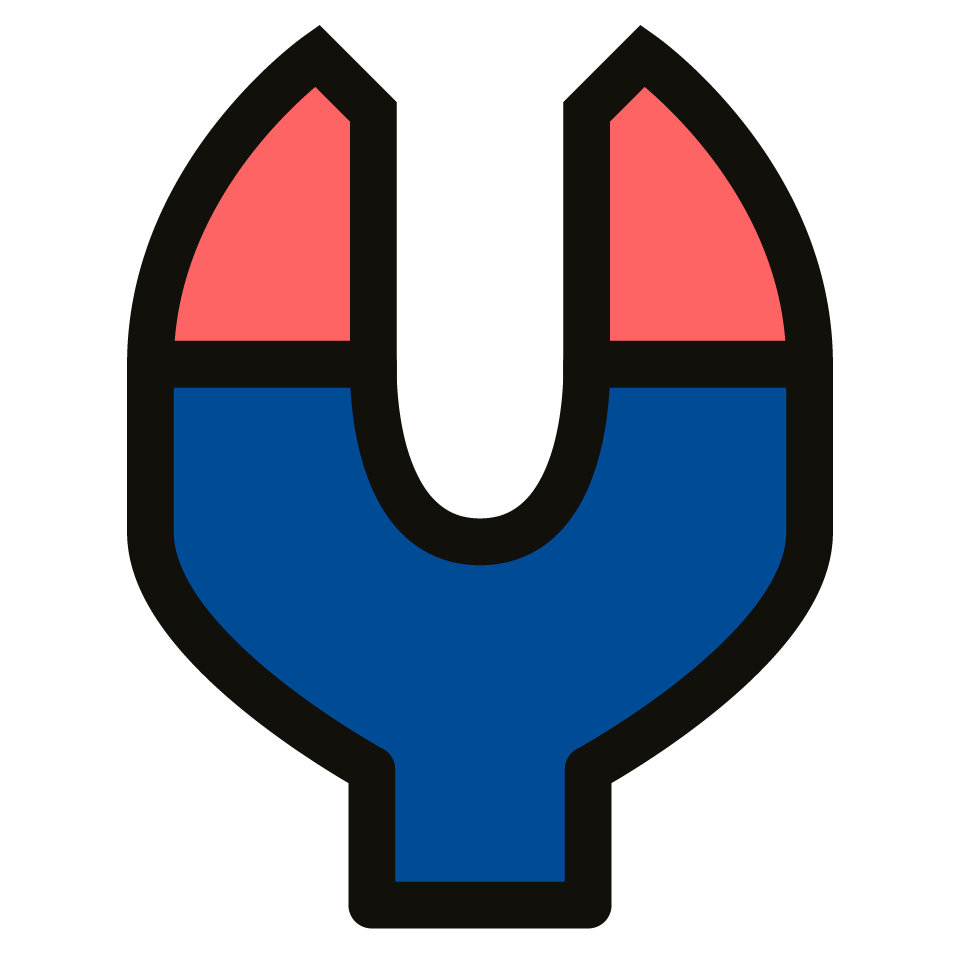 Dragon – with monsters having different weaknesses and resistances to each of them.
Dragon – with monsters having different weaknesses and resistances to each of them.
Like we said, the Motion Value system makes it so slow attacks will do more damage compared to fast ones. Elemental damage is instead purely dependent on the weapon’s Elemental Value. Say the Elemental value for both the long charge of a Great Sword and the simple hit of a Sword and Shield are the same, then they will do the same damage. The difference between slow and fast weapons is balanced out thanks to this system.
Decisions aren’t always so binary however if you are using medium fast weapons like Lance or Longsword that can do both good raw and elemental damage, as you will need to decide which will be the best one to bring.
How much raw damage does my weapon have? And how much elemental? What is the monster weak to? What combo can I safely use against that monster? What is the best balance between Element and Raw? Knowing what monsters you’ll face and how your weapons work will help you make informed decisions on which weapon to bring and if you need to favor element or raw damage. Once again, preparation is key to enjoying Monster Hunter.
The second aspect of the Hunter’s kit is armor.
Every piece of armor has positive or negative points toward specific skills attached to them. Once you reach a certain threshold by mixing and matching pieces, together with the decorations you slot into slots, you’ll activate certain skills. The pieces come in both a Blademaster and Gunner version, the former giving you more elemental defense while the latter less defense to balance the fact you are fighting at a safer distance.
These can range from simple buffs like increased Raw damage, to more utility based changes like protection against wind pressure. Since you can only have around 3 or 4 skills active at one time, you have to balance what way you want to play as having a lot of powerful offensive ones means you’ll become a glass cannon.
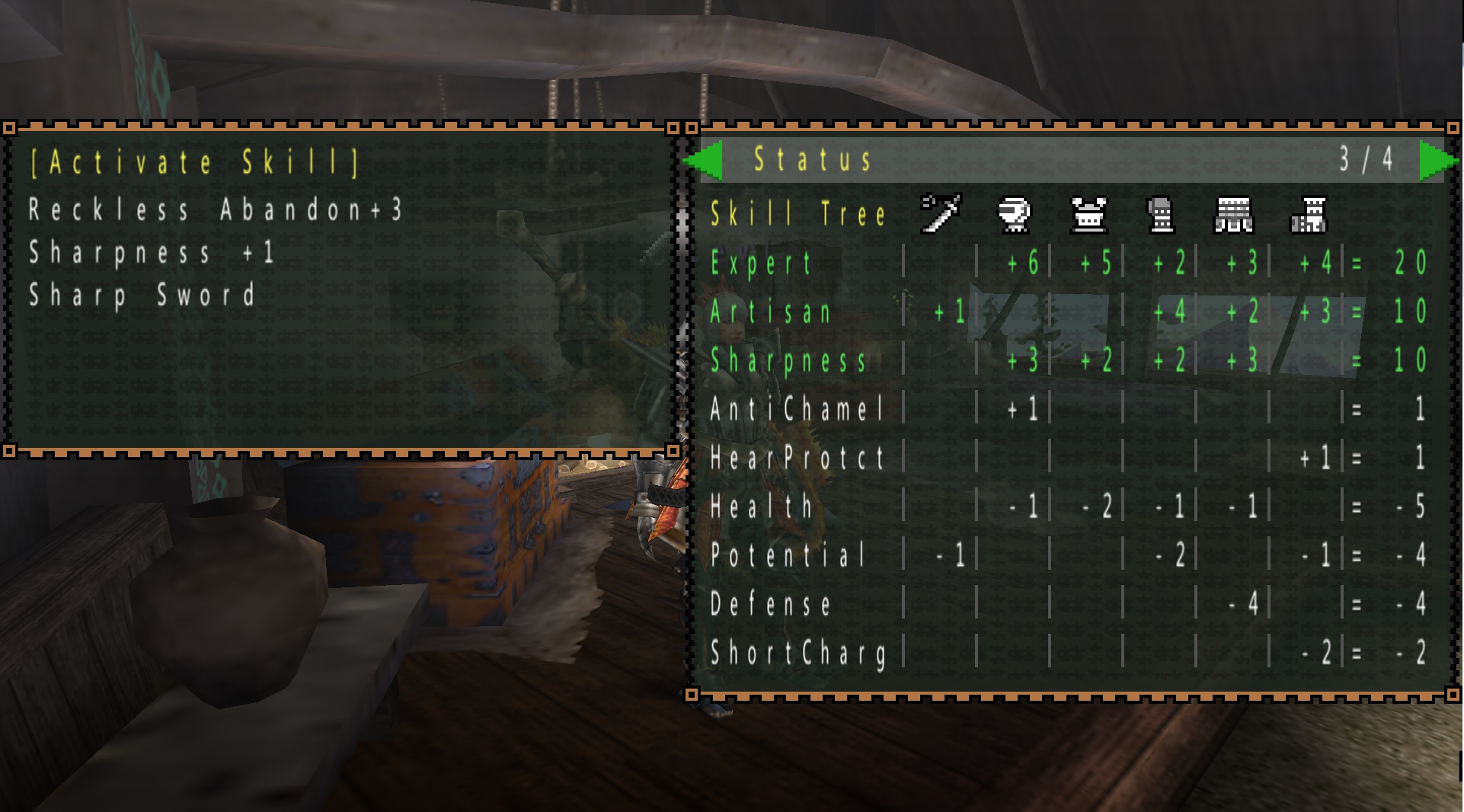
To craft these armors and weapons you’ll have to kill monsters, the required materials necessary being generally more rare. With some materials only having a drop rate of 1%, you’d assume this would result in a lot of grinding.
Let’s assume you want 4 Rathalos Wings. To get those, you’d need to hunt down a Rathalos and break its wings to increase the chances of getting said item. Higher ranked or more difficult missions give a higher drop chance as well or they may offer multiple targets to maximize your chances. This allows you to ‘grind’ in a more focused way and gives you the choice of what quest to choose to do so.
This is further helped by the absence of side quests or other unrelated menial tasks – if you need a specific item, you have to engage in the game’s core content and thus also core mechanics. You need to play the game and hunt monsters.
Let’s say you need to hunt a Gravios, a big monster that doesn’t take almost any physical damage but is really weak to water. To craft a water weapon you may need to kill a Plesioth, which can be challenging. So to do it as efficiently as possible you decide to craft a Heavy Bowgun to make it easier. To craft the Heavy Bowgun you need drops from a Shogun Ceanataur, which is really weak to thunder.
You see where this is going. Through the game’s usage of elements and weapon options you’ll organically create your own chain of quest and short term goals, always finding new reasons to engage with the content as a whole.
Finally the last piece of the puzzle regarding the Hunter toolkit are items.
Items follow the elements of commitment and positioning seen throughout the rest of the game. Everything from using specific items, setting traps to sharpening your weapon, forces you in an animation; making you think of when to use them.
Healing in particular makes your hunter stand completely still as they do a lengthy animation where they flex with no way to cancel out once you start the process. You also don’t get any health until the animation is finished. Just like with attacking, you need to observe the monsters, learn their pattern and decide when is the best moment to heal. If you just do it randomly you will get punished.
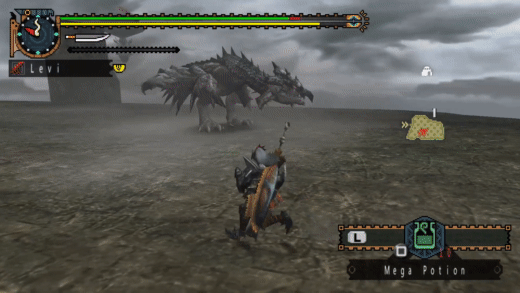
Other items work more as utility; you have barrel bombs that you can place and detonate to deal damage, flash bombs that temporarily blind monsters, paint bombs to tag the monster and make it visible on the map and so on. There’s also items like the aforementioned Cool and Hot drinks for specific temperatures Items can also be combined together or with stuff you find during a quest to create new ones.
These items interact with different monsters in different ways.
Flash Bombs will bring down a flying Rathalos and make them stay in place for a time, but flash a Rajang and it will start to trash around randomly making the hunt a lot harder. Sonic Bombs emit a strong sound that can make a Diablos come out of the sand and stun it for a while but they only work if it’s not enraged.
Experimentation and knowledge of the monster is paramount, and once you accrue that knowledge these items can become extremely strong though far from mandatory in their usage. If you are experienced enough you’ll be able to kill every monster without ever using them. What they do is make certain fights easier and help you out if you need to break certain hard to reach parts.
Chapter 03
Monsters
All of these systems would be completely useless though, if the Monsters you would be up against would be underwhelming. As we noted before, the weapons are simple to pick up and play. Instead, the real complexity of Monster Hunter lies in how you engage with the monsters and the way each weapon and item interacts with them and creates different matchups.
Hunting quests generally give you 50 minutes and 3 tries to complete them. The time limit is not an indication of how long the quest will take but serves more of a way to give you the option to explore the area, gather resources and kill small monsters while hunting the main target, as just killing the monster will only take around 10 minutes at best, for an experienced player.
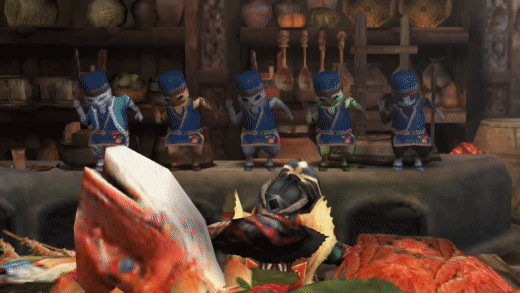
Monsters all spawn on specific points of the maps depending on the map and the quest though you do have to find them yourself. The 3 tries system (think of them as continues) also makes it so that the monster damage can be kept high, as even getting one shotted (something that only rarely happens even with subpar gear) doesn’t immediately fail the quest.
The first aspect to keep in mind when hunting a monster is that they have different hurtboxes (called hitzones) for each limb; attacking the body and attacking the head are not the same things and every monster has one or more weak points you can target to do more damage or break some parts. These also change depending if you are using a cutting or impact weapon or if you are shooting from a bowgun or a bow.
Let’s take Nargacuga as an example, a High Rank monster whose head is its melee weak point while its wings are really resistant. Damaging the latter is a lot safer but means doing half the damage you would do on the head. This forces you to be more precise to hit the head consistently so the hunt can be more efficient. On the other hand if you need to break its wings for increased rewards you need to rethink your approach to deal with the more resistant part, either by using elements or Barrel Bombs to destroy them quickly.
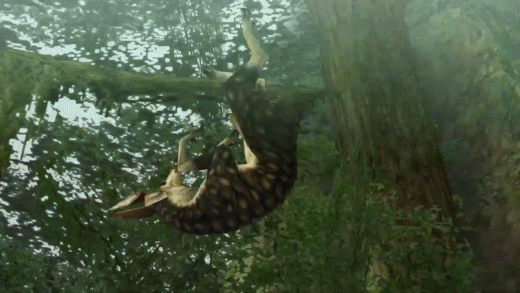
Positioning is key, but knowing the monster’s patterns and being able to anticipate how it will move and when and how it will turn will make it easy to snipe specific parts. One key mechanic that helps in this aspect is the way monsters turn. They will turn 90° almost every time, stopping when they directly face you. This means that if you are directly behind them they will always turn twice before facing you and you can use this time to prepare. Like charging a specific attack so it hits them on the head while they turn or time a combo so that the important attack will hit them on their weak points. You still need to be mindful of where you stand though; too close to the monster and you will receive chip damage as he moves around, rewarding good positioning.
The way monsters react to being hit builds off of this as they only stagger once they reach a certain amount of damage on a specific part. Understanding when to attack is paramount if you don’t want to get punished on your recovery. Mastering this system and keeping track of when the next hit will stagger, makes it so you can transform an unsafe opening into a safe one and even stop charging monsters.

Once a monster has suffered enough damage or certain other conditions are met, they will enrage. When that happens they’ll become faster and do a lot more damage, but that’s not all. The way they take damage, the way they interact with items and even if parts can be broken or not may change as well.
To use the Nargacuga example once more; when it’s enraged it will take 5% more damage on the head. This may seem little but it quickly adds up. Furthermore its tail can be cut only when it’s in this state, adding another little layer of strategy.
Breaking monster parts will also sometimes change how they take damage. The Gravios, being a big armored wyvern, is extremely resilient and will only take a small amount of raw damage while being generally weak to water. Breaking its belly to expose the flesh behind the armor though, will make it take severe damage from both raw and water.
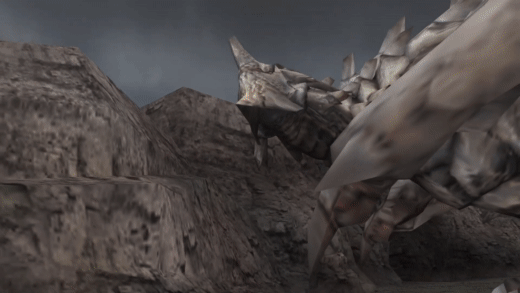
The only way to know all of this is by experimenting and learning by fighting monsters, forcing you to become an expert on the matter. While the game doesn’t flat out tell you how each weakness works it does give you a general indication. The hitstop, particle effects, sound and blood effects change if you are hitting a strong, medium or weak part of the monster. This allows you to study the monster while fighting it. Their remaining health is also hidden but you’ll notice that some monsters might limp, enrage more often or behave in different ways when near death, giving you an indication of how close you are to making the kill.
When you realize that the monster is about to die you have different choices. You can just finish it off or you can set a trap and use Tranq Bombs to catch him. Each option changes or increases the rewards you get.
The target monster is not the only beast present in the quest however, with various zones also housing different types of smaller creatures. In Freedom Unite these are extremely aggressive and will disrupt you while you are hunting the big prey. The way they are designed is generally inconsistent. Sometimes they offer an interesting challenge, having you split your attention to different targets, but most of the time they simply get in the way. Doubly so when you’re trying to finish the quest as fast as possible as they create an additional layer of randomization.
While we noted before that positioning is key while being on the offensive, it is also a big part of your defensive play. In Monster Hunter you always start with 100 Stamina, which can be increased to a maximum of 150 by either eating before starting the quest or using items such as Rations and Steaks.
Attacking, outside of some special attacks, doesn’t consume stamina, but blocking, dodging, running and performing a dive does. Only some weapons can block, with the universal defensive option being dodging and the dive. Dodging consists of a roll that gives you a small amount of iframes – 5 to be exact, which can be increased to 8 and then to 10 with certain skills – and has a good amount of recovery so that you can’t mindlessly spam it.
These two factors added to the fact that monster attacks have large hitboxes, makes it so that using iframes properly is not enough; positioning and the direction of the roll is also important.
The perfect example of this is the Tigrex. One of it’s main attacks is a fast charge that’s really difficult to dodge, especially at close range. If you observe the monster though you will realize that when it starts its charge it will raise its left arm first. If you dodge towards that opening with the right timing you will be able to dodge it safely and consistently.
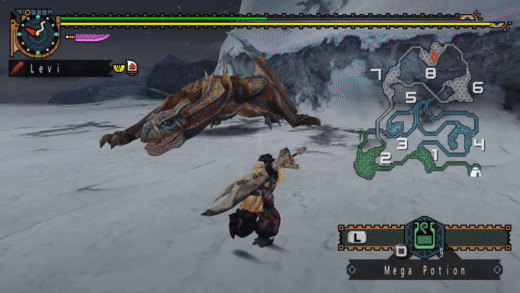
The Rajang, a monster that can only be described as a “pissed off Goku”, is an incredibly dangerous monster with fast and damaging attacks. Most of its attacks start on its left side however, so, if you move clockwise and try to position yourself on its right you’ll be able to safely avoid its attacks even without even using iframes.
While all these mechanics tend to work in tandem, they don’t always work in harmony. Case in point, the special ‘siege quests’. Missions that see you fight a giant monster like Lao Shan Lung while trying to protect a fortress.
Having to defend against a dragon the size of a mountain sounds fun, but the quest quickly translates into Lao Shan ignoring you and making its way to the fortress while you chip away at its massive health bar by repeatedly hitting its belly for almost fifty whole minutes, with no way to make it go faster as the monster is hardcoded not to die until it reaches the final area of the map. Other fights like Fatalis see similar problems arise, with them only having three moves and ending with you just hitting its face again and again, and again, and again.
On the flipside though, there’s the end-game monsters called “Elder Dragons”. In the game’s lore they are mysterious, legendary monsters capable of completely destroying an ecosystem. They live up to this reputation in the game by being some of the most difficult fights, by making it so no monsters outside of them appear in their quest and with special mechanics.
For example some of them might have unique aura-abilities, like damaging fire auras, repelling wind auras or even invisible cloaks that can only be dispelled by breaking their horns using Dragon Element. Unique to them is also the “repel system” – seeing an Elder Dragon flee once 25 minutes have passed. They will return in a future quest however, maintaining some of the damage you inflicted to them.
Now, having covered the monsters, it is sadly time to address the elephant in the room. If you search any information about this game you’ll find a lot of people noting unfair hitboxes, with the poster child of this argument being the Plesioth, a giant fish monster, and it’s particular hipcheck attack. The truth is that hitboxes, outside of rare cases, are not broken. Instead, it is the limitations of the PSP’s hardware rearing its head when it comes to the monster’s animations, making it seem like the monster is hitting you when it shouldn’t.
Hitboxes are also pretty large by default, which can be frustrating for beginners. This is by design however, like the previously mentioned Tigrex example; you can’t just react and i.frame through everything, you need to be proactive and predict what the monster will do and position accordingly to dodge it properly.
This is where the Plesioth comes in. The hip check hitbox is precise, but the animation is not and makes it seem like you are safe where you really aren’t. This has been fixed in later games, but the hitboxes remained the same, only making the animation more precise.
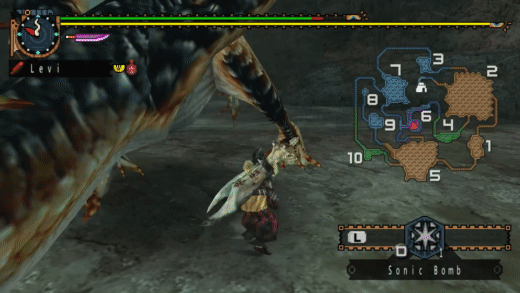
It can be extremely frustrating going against a Plesioth for the first time, but like everything in this game, if you take the time to understand you’ll be able to efficiently kill it in no time. I assure you, that once you understand how to do it, you’ll dodge the hip check every time.
Conclusion
The armor, the weapons, the skills, the items, the monsters – all together they create a balance between the Action and RPG elements of Monster Hunter. Knowledge, preparation and choosing the right weapon is important, but skill remains the deciding factor lest you become the prey.
So in this sense, Monster Hunter is an Action RPG, not an Action RPG. Words echoed by Ryozo Tsujimoto, the game’s producer:
“If there is a quest you can’t clear right away in Monster Hunter, you can change up your tactics and strategize, change your weapon or armor set, bring different items with you […] or come to an understanding of the monster’s movements so you can effectively deal with it. In the end, your technique as a hunter is the ultimate deciding factor.”
That said, not all of these tidbits noted to help you on the hunt are as clear as others.
For example, the only indication of enemy elemental weaknesses comes from analyzing armor pieces made from their skin, which can be an obscure mechanic to figure out by yourself. Monsters are also only weak to a specific element on certain body parts, which may be out of range to consistently hit for some weapons. These are small oversights that can see players make uninformed decisions, which runs counter to its design.
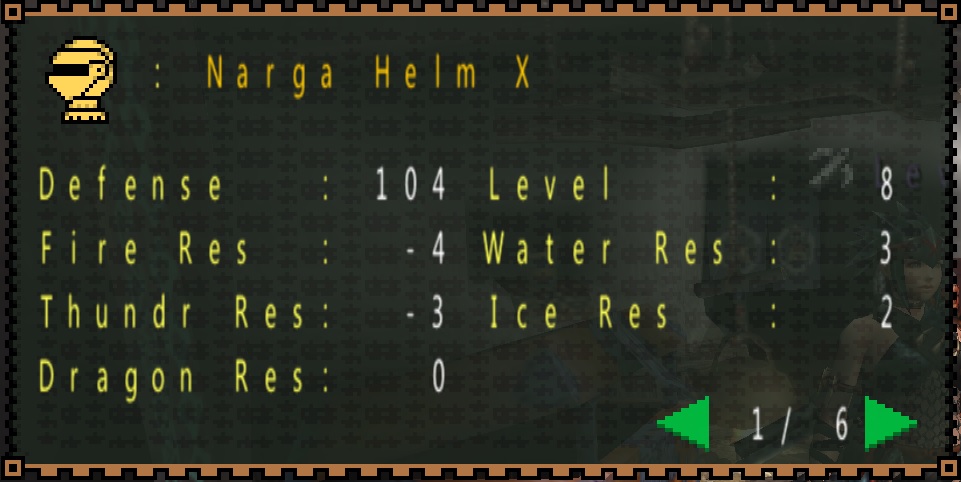
As a whole though, Monster Hunter is a strange series in a way. Starting out as a series that barely sold a few thousand copies, growing to a series that sold millions and continues to grow even now with the release of World and Rise. Yet it is still incredibly niche, being ignored by a lot of players despite the series’s success.
Despite being the game most veteran players started with, Freedom Unite is becoming more and more forgotten by the day. If you do decide to remember it, and put the time into it to understand how it works while looking past some of its obvious blemishes, you’ll find a fantastic action game that gives you endless enjoyment.
We’ve talked about how a monster’s clear patterns make it so you play predictive, not reactive. On how items work between you and them. How the different types of damage influence the fight and also the grind. Yet the beauty of Monster Hunter Freedom Unite, is that in both monster, maps and equipment design you’ll find a kind of purity that is sorely lacking in other entries. It’s just you versus the monster with rpg systems that expand the gameplay without ever getting in the way of it.
It’s a hard game, with a steep learning curve and complex systems. Through this article however, I hope it’s one that you might now give a shot and become a hunter. See you there!
斬 postscript notes 斬
- The three tries are ironically called “carts” by the players as every death sees your hunter brought back to camp by cat helpers using a small cart.
- The Rajang is a monster similar to a mix of a gorilla and a minotaur, but it’s biggest inspiration comes from the Saiyans of Dragon Ball’s fame. When he becomes enraged he’ll grow golden hair becoming stronger and faster. In later entries he also has some subspecies that make it so it has an aura around it and a new mechanic in World and Rise, makes it so you can only remove his enraged state if you hit his tail enough. Finally in MH Frontier a special version of the monster can use a Genkidama as you can see here: https://youtu.be/ExkMfyj-9Ug?t=986
- An interesting aspect about weapon stats is that the attack value you see attached to a weapon is not the actual real value. Every weapon has something called a “bloat value” that multiplies the actual attack of the weapon. The Great Sword has a bloat value of 4.8 while the Dual Blades have a value of 1.4. So a Great Sword and a Dual Blades with the same real attack of 150, will appear as 720 and 210 respectively. This is really confusing, but it exists so that players can have a general way to compare weapons and to give an average of the motion value system.
If you saw a slow GS with 150 attacks and a super fast weapon like the DB with the same value, you would think that the DB would always be better. This is a way to show you that it’s not. A similar thing happens with the elemental value which has a universal bloat value of 10 and for element in particular I can’t find a reason as to why they would make it this way. To add assault to injury this bloat value system only applies to games made by the Main Team, while Portable Team games usually show the real value, with Freedom Unite being one of the rare exceptions.
- Like I said the damage formula is pretty long and difficult, but for everyone curious, here’s how it works. For Raw we have:
Raw*Mv*Aff*Sharp*Wm*Hz*Defense
Raw = The true value of the weapon attack with all buffs.
MV = Motion Value.
Aff = Affinity multipliers, shows the average increase in damage with the specified affinity. It’s calculated (1+(affinity*0,25).
Sharp= the sharpness multipliers.
Wm= weapon multiplier, it depends on the specific weapon you are using and on the attack, some of them have some of them don’t.
Hz= the monster hitzone value.
Defense= the defense multiplier that it’s applied to gathering hall quests of the different ranks.
For Element:
Element*Sharp*Wm*Hitzone*Defense
It may seem overwhelming at first, but the fact that they are all simple multiplications makes it really easy to understand and calculate once you get it.
- A note on the different versions of the games. The initial release is the vanilla one and it gives you access to Low Rank and High Rank. After that, usually after a year, a new version called “G” gets released, that adds the G-rank together with more weapons, items, monsters and quests. Think about it like a “Final Mix” version. Freedom Unite is the G version of Freedom 2.
- Iframes in this game are also called “MOI” or moment of invincibility. They can be extremely useful to dodge stuff like tail swipes, roars, wind pressure and tremors, but they require mastery to use them properly. Once you master them, however, you’ll be able to do stuff like this: https://www.youtube.com/watch?v=xdSUhJoHR_Y
- The game can still be played online if you are playing on the PPSSPP emulator thanks to a third party private server called Hunsterverse. You can find all the needed information here: https://hunstermonter.net/
- Regarding Elder Dragons, their uniqueness has been severely diminished starting from the 3rd generation of games and has completely been removed with the release of World. The auras that some of them have are now weaker and not that important. Most of them can’t be disrupted using status ailments, their horn can now be broken without requiring the dragon element, other monsters now appear in their quest and Elder Dragons now go to sleep like any other monster, something that they didn’t do in 2nd gen as they were considered invasive species.
- The best example of small monsters working is with the fight against the Blangonga. He’s a big snow ape that will summon his juvenile version called Blangos with a roar. If you manage to break his whiskers however, he won’t be able to summon them anymore. It’s a shame the game doesn’t have more interactions like this regarding small monsters.
- For people that couldn’t play in multiplayer, Capcom created the Palico system where you can hire a felyne companion to help you out in your quest. There are different types of them, with a different focus and behaviour, but they are all almost completely useless. They do a miniscule amount of damage, offer little to no utility and they are instead almost always a hindrance as they can hit the hunter with friendly fire and they love to spam aoe bombs.
Future games greatly expanded the system and made them really strong (maybe a bit too strong) and customizable, but in Freedom Unite there is no reason to use them. The same felyne companion can also be hired to be used as chef. Before a quest you can have them cook for you and depending on the food combination they will give you different buffs and increase or decrease your starting health and stamina. One of these skills is Heroics, a fun high risk high reward ability that makes it so that if you are 10 health or less you get an incredible boost to your damage.
- On the topic of multiplayer; the strategies discussed above still apply, with the focus on positioning being still present even when the monster has 4 targets that draw aggro. It even manages to fix some of the problems with the multi-monster quests somewhat. It also brings to the table new ways to hunt efficiently, especially if you want to farm as fast as possible mainly HAME (even if the name didn’t start with Freedom Unite), a strategy that consists of using a combinations of three Heavy Bowguns that focus on dps and one Light Bowgun that focuses on chaining together status applications like paralysis, together with crowd control options like flash bombs and traps. If done with a coordinated group the monsters won’t be able to move and they’ll just get melted in minutes.
- Other than the normal quests the game also offers “Arena Quests”, where you are pitted against a monster with a predetermined load out and only one cart. The objective is to clear them as fast as possible either solo or with another player. The arena system is still the one utilized by Capcom to organize official tournaments, as it makes so that everyone is on an equal playing field, but the community prefers speedrunning actual quests instead as they give you access to every monster and to multi-monster quests.
- On the subject of elemental weaknesses, in a lot of cases saying a monster is weak to a specific element is only a half truth: The Diablos is described as being weak to ice, but if you check its table you’ll see that it’s weak to ice specifically to its head and back. The former takes a small amount of raw damage at 25% and the latter can only be reached either with a ranged weapon like a bowgun or when the monster has been tripped. This means that if you decide to fight it with a short range melee weapon like the SnS where you will mostly hit the legs, you are better off using a weapon with a small amount of Thunder as it takes 15% on that spot against the 10% from Ice.
- If this article made you interested in Monster Hunter and you need some guidance on how to start, check out this guide by HotPocketHPE. It’s not specific to Freedom Unite, but it’s still incredibly helpful: https://hotpockethpe.github.io/mhguide/
鑒 reflection style 鑒
In this short section I reflect on the article from my own viewpoints as a gamer and lover of the genre instead of a critic.
I want to thank Royta for contacting me to write an article about one my favourite games. I never wrote an article before, so I feel honoured to have my name on article on a site I respect and I also feel honoured to have been given the chance to write about Monster Hunter. I also want to thank him, and his editor, for helping me by editing the various draft and for explaining how WordPress and the site worked.
Freedom Unite is one of my favourite games, it was one of the first game in which I put more than 100 hours, it made me love challenging game, made me understand the power of a community and it teached me a lot of action games fundamentals from utilizing iframes, to understanding patterns. In a lot of ways, even with its flaws and some mechanics that could be considered old, I feel it’s the peak of Monster Hunter design. In no other game in the series the core aspect of the combat systems, that being commitment and positioning, are so important and the high level of difficulty makes it so that you realy need to understand its intricacies if you want to succed. All of the systems works together to feed back in the main loop and the Monsters, while sometimes limited by the hardware, are designed in a way to demand you to adapt, learn and use all of your tools (or seek help of other players to succed).
Explaining what makes different to the other entries in the series is hard, it’s a lot of the small things that add up to create a different experiences. From monsters having attacks that require both positioning and timing to avoid, to preparation being important to succed, to the element system being extremely important and creating both variety and extra content and Monster acting more like beast, having their own specific tells for when they are close to death or specific weaknesses that go beyond simple elemental ones. The Plesioth can be hard if you fight him in melee however is easy to fight as a gunner. The Diablos can be annoying with is frequent digging, but pellet seeks his tails and the Daimyo Hermitaur’s shell can only be broken with a blunt weapons. Later entries in the series made some of this fight better in some ways while also making them less unique and more homogenized and the decrease on the level of challenge made it so you can just wing a lot of the fights and still come out on top.
This mechanics are sometimes seen as outdated and unfair so I hope that with this article will make you give the games a chance and showed you at least a part of what makes it so special. And if not, I still hope you enjoyed reading it.

